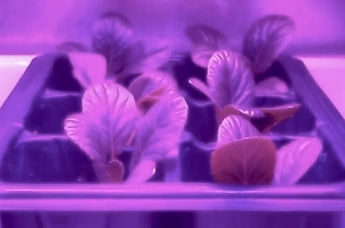
1. Freezing Adaptation in Plants
Plants continuously adapt to environmental changes to sustain growth, with low temperatures being one of the most severe stresses. Under subzero conditions, extracellular ice formation causes water to be drawn out from cells, leading to dehydration. In addition, the mechanical pressure from growing ice crystals can severely damage membrane structures. To survive such freezing stress, many plants acquire freezing tolerance through a process known as cold acclimation.
While the accumulation of soluble sugars and changes in membrane lipid composition have long been known to alleviate dehydration damage, our research has highlighted the crucial role of structural modifications in the cell wall. In addition to cell wall polysaccharides, the accumulation and degradation of storage carbohydrates such as starch and fructans contribute to osmotic regulation and structural stability. These polysaccharides are thus not merely structural components but serve as a central part of an integrated defense system against freezing and dehydration.
Moreover, cold acclimation induces not only compositional changes in cells and tissues, but also visible morphological transformations. These structural alterations are closely linked to changes in the mechanical properties of cells and are likely to play a significant role in enhancing tolerance to freezing and dehydration. We are currently working to elucidate the mechanisms and significance of these morphological changes to gain a deeper understanding of the integrated strategies plants use to adapt to extreme environments.

Cold exposure causes a wrinkled leaf surface in Komatsuna.
2. Deacclimation in Plants
To cope with cold conditions, plants halt growth and enhance freezing tolerance through cold acclimation. However, when temperatures rise, they lose this tolerance and resume growth. This process, known as deacclimation, is a key adaptation that enables plants to respond flexibly to seasonal and diurnal temperature fluctuations by balancing growth and stress resistance.
We have analyzed changes in sugars, particularly soluble sugars and cell wall components, during both cold acclimation and deacclimation. Our findings indicate that while cold acclimation leads to the accumulation of soluble sugars and certain cell wall components, deacclimation results in a reduction of soluble sugars, whereas some wall components remain unchanged. Notably, when deacclimated plants were subjected to a second round of cold acclimation, they displayed greater freezing tolerance than during the first. These results suggest that deacclimation is not merely a reversal of acclimation, but may represent a strategic adjustment that prepares the plant for subsequent stress events.
Further studies on how these processes affect freezing tolerance and growth will offer new insights into plant adaptation strategies under fluctuating environmental conditions.
3. Plant Desiccation Tolerance
In terrestrial environments, drought stress can cause membrane damage and cell wall deformation, ultimately leading to cell death. However, resurrection plants possess the remarkable ability to maintain cellular structure during extreme dehydration and rapidly resume metabolic activity upon rehydration.
The accumulation of trehalose has been suggested as a key factor in protecting cellular components under desiccation. Yet, trehalose alone cannot fully explain this tolerance, and other mechanisms are likely involved. For instance, Selaginella tamariscina is capable of withstanding severe dehydration without structural damage, while its close relative S. moellendorffii, despite accumulating trehalose, lacks comparable tolerance. This discrepancy implies roles for differences in membrane composition, protective proteins, and other factors.
Our laboratory aims to uncover the mechanisms underlying desiccation tolerance in resurrection plants by comparing S. tamariscina and S. moellendorffii, with a particular focus on the cell wall’s role in stress resistance. By elucidating these mechanisms, we hope to contribute to a broader understanding of the evolutionary survival strategies employed by land plants.
S. tamariscina rapidly recovers upon rehydration, even after extreme desiccation.
